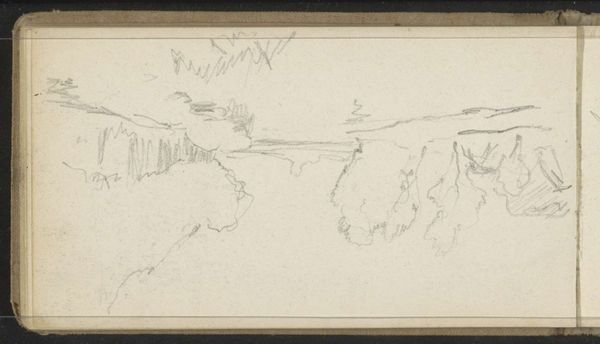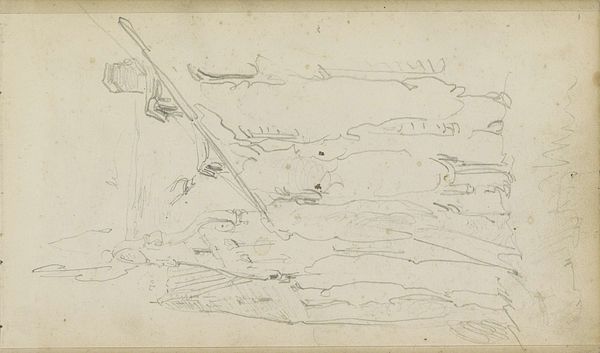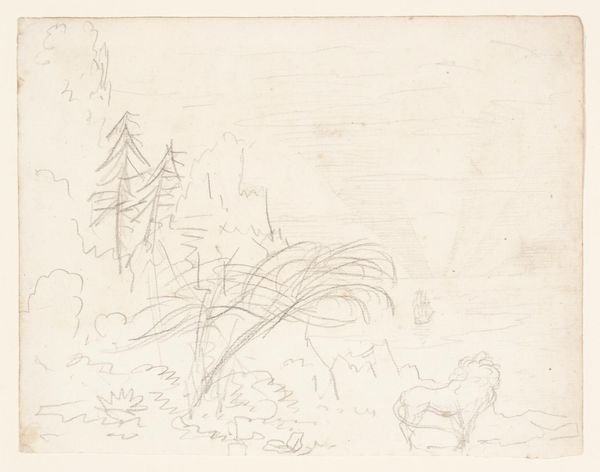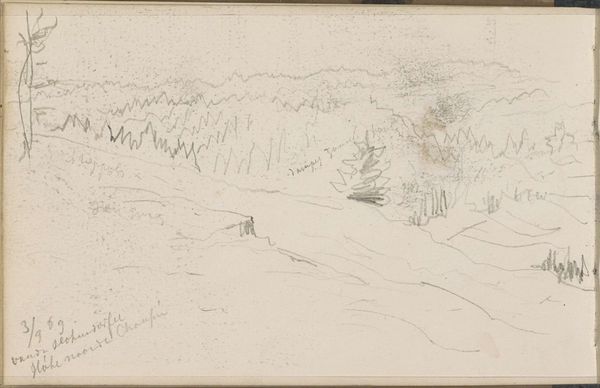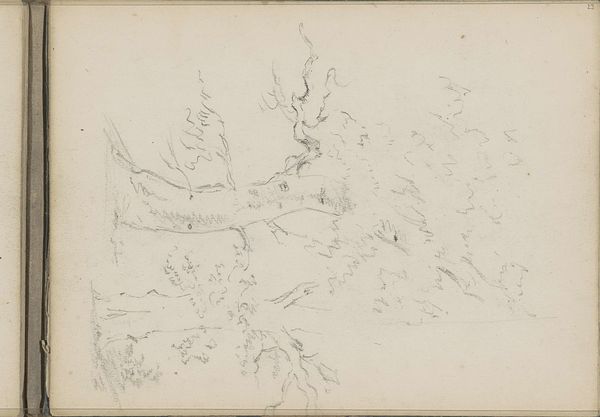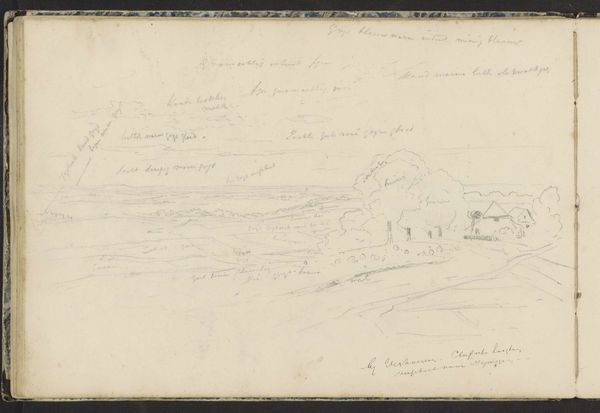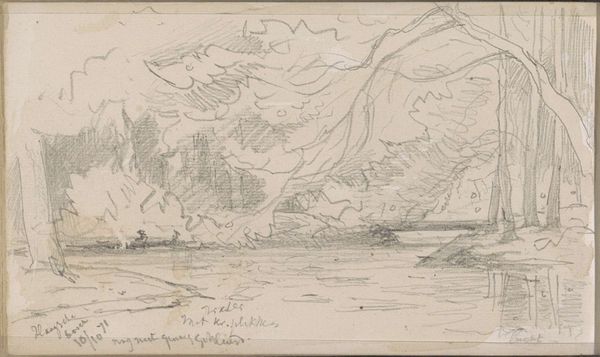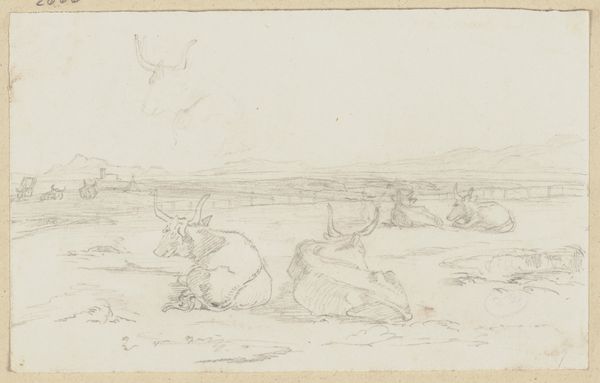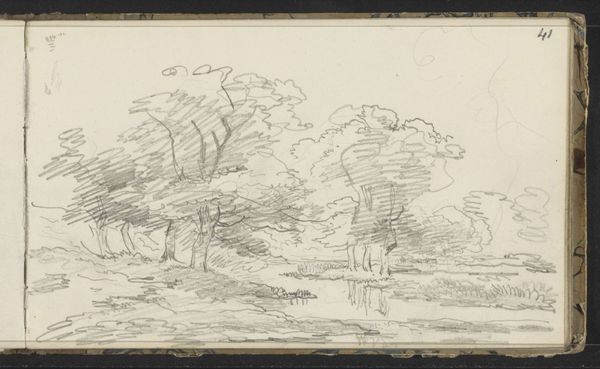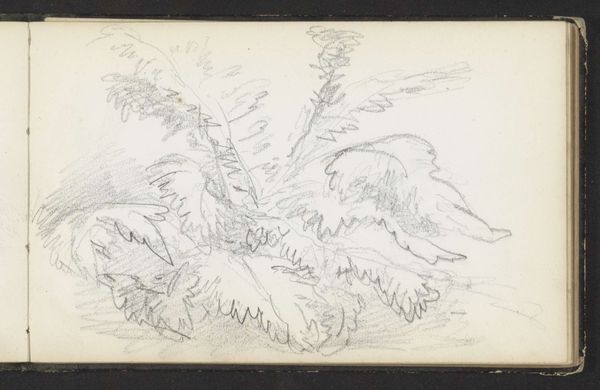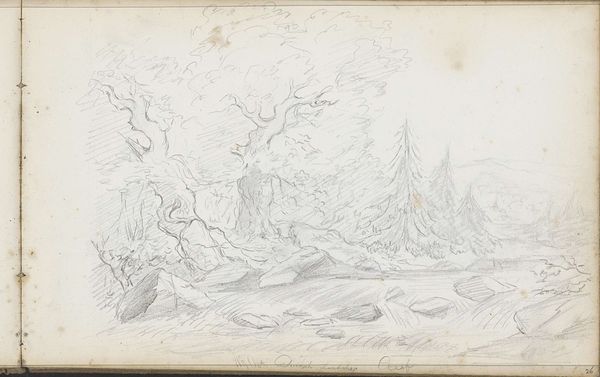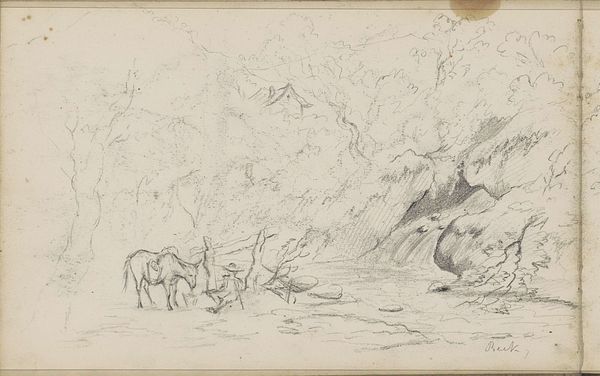
drawing, pencil
#
drawing
#
pencil sketch
#
landscape
#
pencil
#
realism
Dimensions: height 184 mm, width 282 mm
Copyright: Rijks Museum: Open Domain
Editor: This is Willem Cornelis Rip's "Waterval op het landgoed Oorsprong te Oosterbeek," a pencil drawing from 1874. It feels almost like a quick note, capturing a fleeting moment. I'm curious, what social or historical narratives might be woven into this seemingly simple landscape? Curator: A crucial question! We often see landscapes as passive backdrops, but they’re always loaded with meaning. Consider this: Rip painted this during a time of increasing industrialization and urbanization in the Netherlands. How might this drawing be interpreted as a response to those changes, perhaps even as a subtle form of resistance or longing for a disappearing rural idyll? Editor: That's fascinating. So the choice of subject, even something as "natural" as a waterfall, becomes a political statement? Curator: Precisely. Think about who had access to these landscapes, too. Leisure time and the ability to travel and sketch were often privileges linked to class. Is there an implicit narrative of exclusion present, a visual statement about who belongs in this landscape? Editor: So, beyond just being a pretty picture, it could be read as a commentary on social inequalities? That really changes how I see it. I’m used to thinking about portraiture or history paintings holding those kinds of messages. Curator: Landscapes are never neutral. They're always shaped by power, ideology, and the artist's own position within society. Considering that Rip painted this particular location in Oosterbeek, were there particular social issues or communities linked to it? Editor: I'll definitely look into the history of Oosterbeek! This makes me think about how much art history I have to learn beyond the art itself. Curator: It's an ongoing process of peeling back the layers, questioning assumptions, and seeking out marginalized voices and perspectives. The real beauty is in connecting the art to these broader stories.
Comments
No comments
Be the first to comment and join the conversation on the ultimate creative platform.
